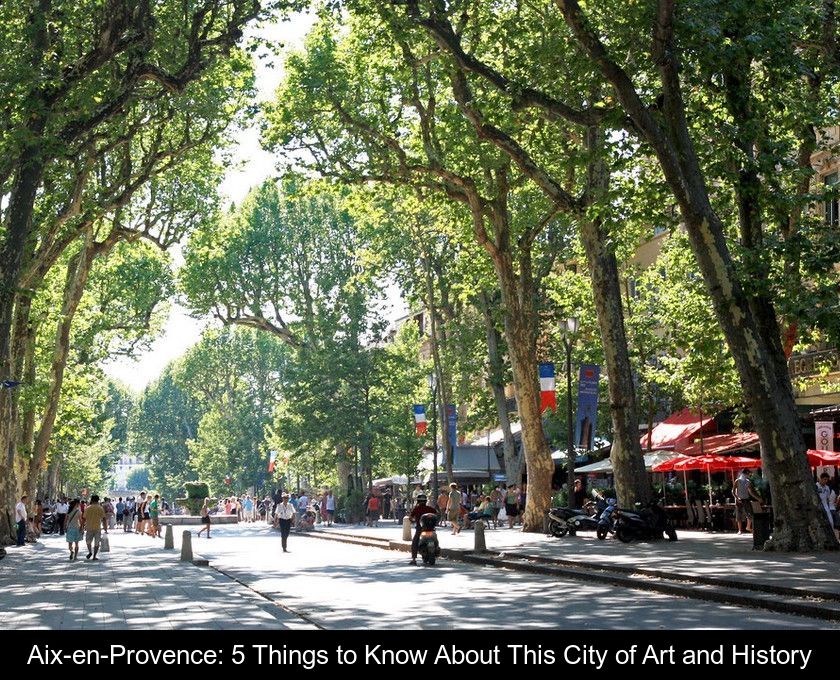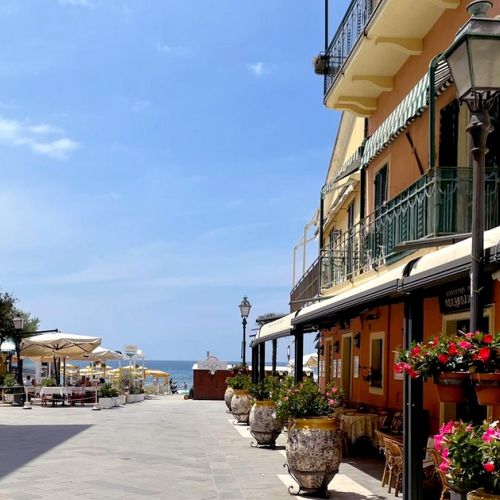Aix-en-provence: 5 Things To Know About This City Of Art And History
City of art and culture, Aix-en-Provence combines the charm of a Provençal town with a well-preserved architectural heritage. This sunny destination invites visitors to follow in the footsteps of Cézanne, mixing leisurely strolls with cultural discovery. Here are 5 things to know about this City of Art and History.
Aix is the former capital of Provence.
Aix-en-Provence, located 15 kilometers from the Sainte-Victoire mountain near Marseille, derives its name from the thermal springs discovered when the city was founded by the Romans in 123 BC.
This city was the capital of Provence in the 15th century and has retained many testimonies of its past prosperity. It owes part of its charm to its ancient fountains, bourgeois residences, and private mansions from the 17th and 18th centuries.
These mansions feature beautiful sculpted doors and windows, as well as balconies and wrought iron works of art. The beauty of its architecture has earned the city the nickname of the Provençal Florence.
She is the hometown of Cézanne.
Its rich architectural heritage is not the only draw of the historic capital of Provence. Aix-en-Provence is also known as the city where Paul Cézanne was born and died.
Today, the Cézanne Trail allows visitors to explore the places where the painter lived and worked. The family estate where the artist spent his childhood and his studio are closed for renovations until spring 2025.
However, visitors can still follow in the master's footsteps at the Montagne Sainte-Victoire, where he loved to paint. In the heart of the Grand Site Sainte-Victoire, the Bibémus quarries house a trail around the small hut where Cézanne stored his canvases and sometimes slept.
Aix is a city of art and culture.
In this city, art is also celebrated at the Granet Museum, a must-visit haven of peace. This museum, located in a former priory, features a magnificent cloister and a gallery lined with sculpted pillars.
Here you can admire paintings by Rembrandt, Ingres, Monet, or Van Gogh, not to mention Cézanne and Picasso, two lovers of the Sainte-Victoire mountain. This massif is now considered the cradle of Cubism.
Aix-en-Provence, the city of Cézanne, is also linked to some great names in literature such as the poet Mistral, Stendhal, and Zola.
It also enjoys international fame in the field of music, and more specifically opera. It hosts the Aix-en-Provence Festival of Lyric Art, which brings together the greatest artists every summer.
It houses a remarkable cathedral.
The "old town," made up of the Saint-Sauveur neighborhood and the County City, is the oldest part of the center of Aix-en-Provence.
You can see the Saint-Sauveur Cathedral, which according to legend was built on a temple of Apollo. This cathedral has a remarkable architecture as it has three naves of different styles (Romanesque, Gothic, and Baroque) and a vast richly sculpted Gothic portal.
Another architectural gem, the Clock Tower overlooks the Town Hall. This tower is the city's former belfry and houses an astronomical clock (1661) whose four wooden statues can still be seen.
It's a lively and dynamic city.
The Mazarin district, designed in the 17th century by Archbishop Mazarin, is a must-visit for shopping enthusiasts! It is home to the city's most fashionable stores.
Cours Mirabeau is another hub of activity, with its restaurant and café terraces. Here you will also find Béchard, an Aix institution known for its sweets, especially the calissons.
Note: The famous Aix calisson is a confection made from almond paste with candied melon and orange. It has been a specialty of the city of Aix-en-Provence since the 17th century.











